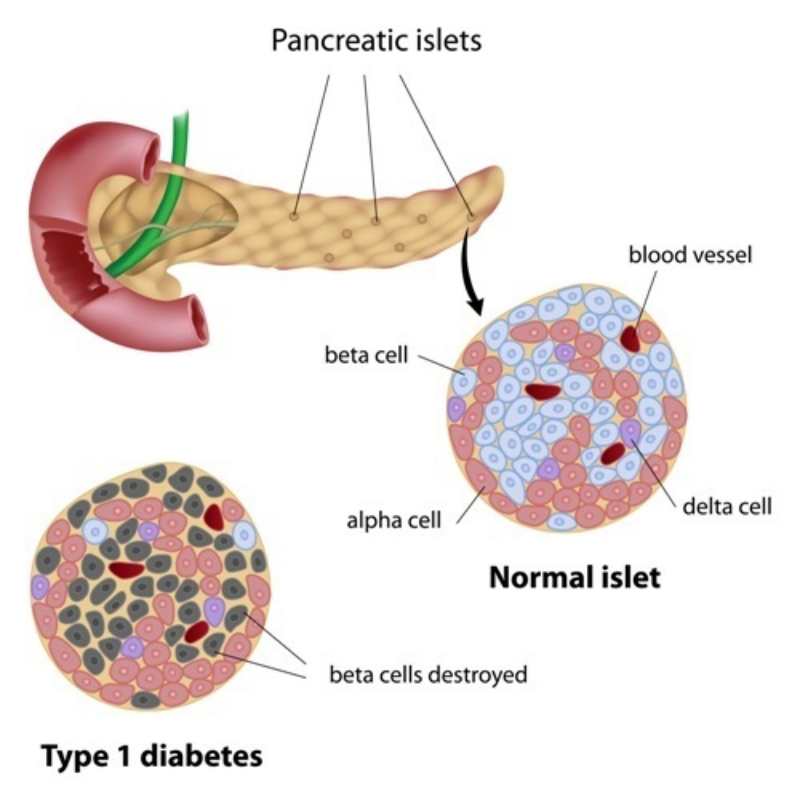Newsletter Signup - Under Article / In Page
"*" indicates required fields
Up north in Stockholm, the Swedish company Biocrine aims to personalize diabetes treatments by screening drugs in pancreatic cells that have been transplanted into the eye.
 Mission: To test new drugs for type 1 and type 2 diabetes on pancreatic cells transplanted into the eye, where the cells can thrive and be easily monitored with a microscope. The treatments can be tested in the eyes of mice to discover new drugs, or in the patients themselves as a way of easily screening which treatment will benefit the patient the most.
Mission: To test new drugs for type 1 and type 2 diabetes on pancreatic cells transplanted into the eye, where the cells can thrive and be easily monitored with a microscope. The treatments can be tested in the eyes of mice to discover new drugs, or in the patients themselves as a way of easily screening which treatment will benefit the patient the most.
Diabetes is a fast-growing problem, with 422 million people suffering from the condition worldwide in 2014. It’s difficult to develop treatments for the condition because the disease has lots of different causes in different patients. Biocrine’s approach to this issue is to improve the way we screen how different drugs will work in a patient.
“Precision medicine is rising in importance as we increasingly find that a single disease like diabetes can have different ‘causes’ between individuals, and therefore different responses over time to different drugs,” the COO for Biocrine, James Hall, told me.
To personalize a treatment, it’s important to visualize the tissue that you are targeting. Since it is not easy to image cells in the pancreas, Biocrine’s tactic is to transplant the patient’s pancreatic cells into their eye. There, the behavior of the cells can be easily tracked using a microscope through the eye.

One use of this technology could be to personalize the treatment of patients with type 1 diabetes, where the immune system attacks pancreatic cells. These patients can sometimes receive transplants of donor pancreatic cells into the liver to provide more insulin, but the immune system periodically attacks the transplanted cells too. This can be stopped with immunosuppressive drugs, but they leave the patient vulnerable to infections.
“With our technology, you can see the cells directly and watch the earliest invasion of immune cells as an autoimmune reaction starts, allowing us to intervene with powerful immunosuppressive drugs for a limited time,” Hall told me.
The method has yet to reach the clinical stage. However, the versatile technique has other potential uses too. The cells can also be transplanted into the eyes of mice, where the company can then test candidate diabetes drugs in the clear, visible environment of the eye.
Spun out of the Karolinska Institute in 2008, the company has raised approximately €10M to develop drugs for diabetes along with its screening technology.
 What we think:
What we think:
Transplanting cells into the eye could allow faster and more specific ways to screen diabetes treatments for patients than current methods, such as measuring the body’s ability to manage sugar. This could make it much easier and faster to deliver the right treatments to patients with type 1 or type 2 diabetes.
Any company able to make a difference for diabetes patients will tap into an enormous market, predicted to reach over €31B ($35B) by 2024.
One big movement in the diabetes field is likely to be cell therapies. Companies such as Evotec and Sanofi are gunning to develop a cell therapy to tackle type 1 diabetes. According to Hall, the beauty of Biocrine’s eye transplanting technology is that it can easily work with cell therapy programs, providing a better delivery site for the cell therapy than the liver, which is a common site for transplants.
“Islet transplants today happen in the liver, where you lose most of the transplanted cells due to shear forces, incorrect oxygen and rapid inflammatory reactions,” Hall told me. “Transplant to the eye is a much gentler process for these cells, meaning the majority survive in much better condition.”
Images from Shutterstock






